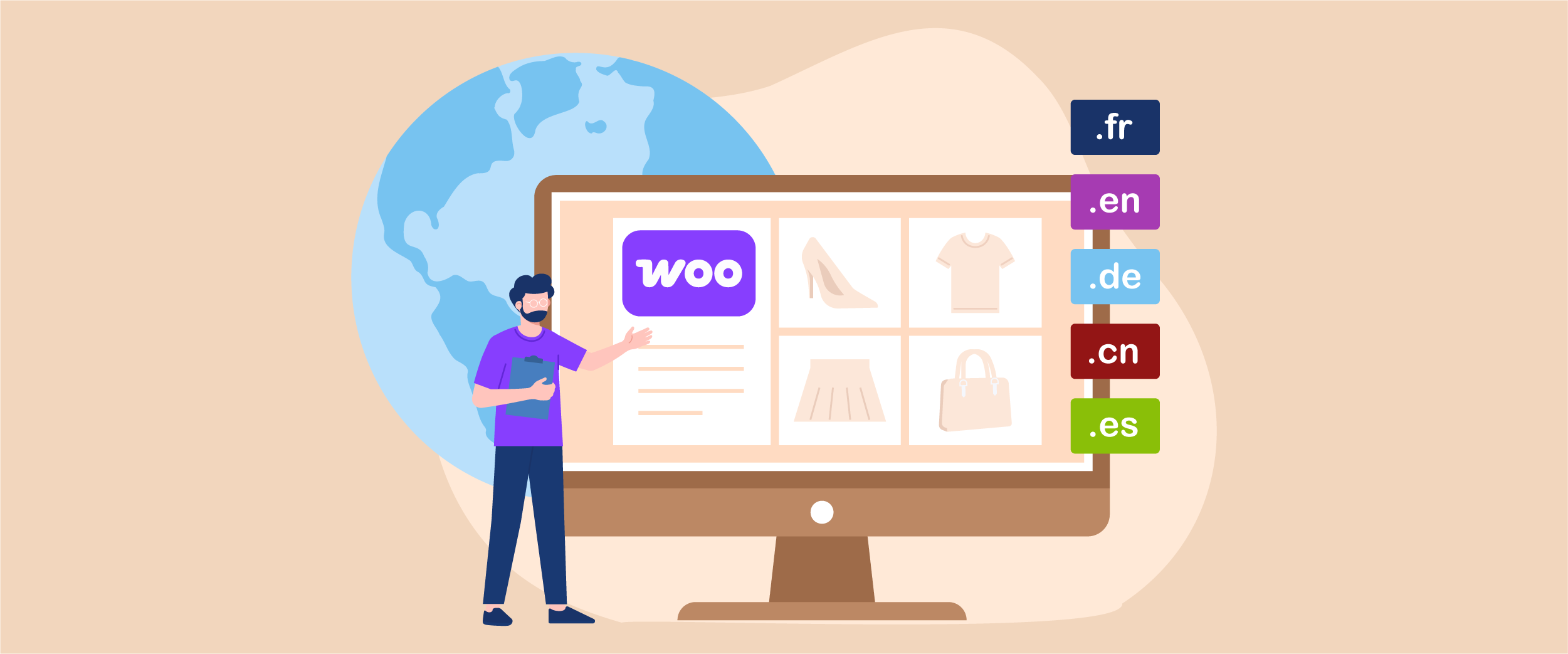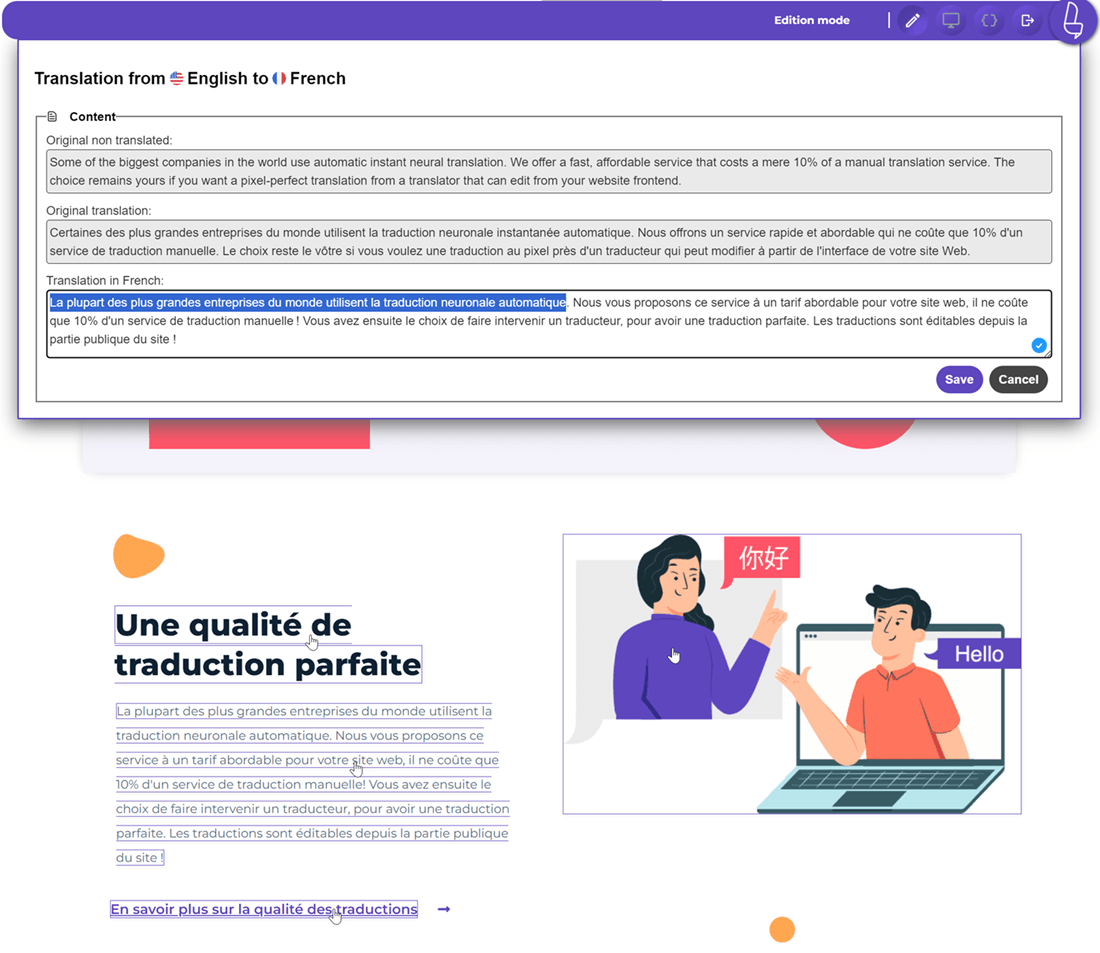Adding Hreflang tags in WooCommerce is important to ensure your online store can reach a global audience with the right language and region. When implemented correctly, hreflang helps search engines display the appropriate version of a page based on visitor preferences, while also preventing content duplication issues that can harm SEO rankings.
This guide comprehensively explains why hreflang is so important for multilingual WooCommerce stores, how to add it manually and automatically, and common mistakes to avoid.
Why does your WooCommerce store need Hreflang tags?
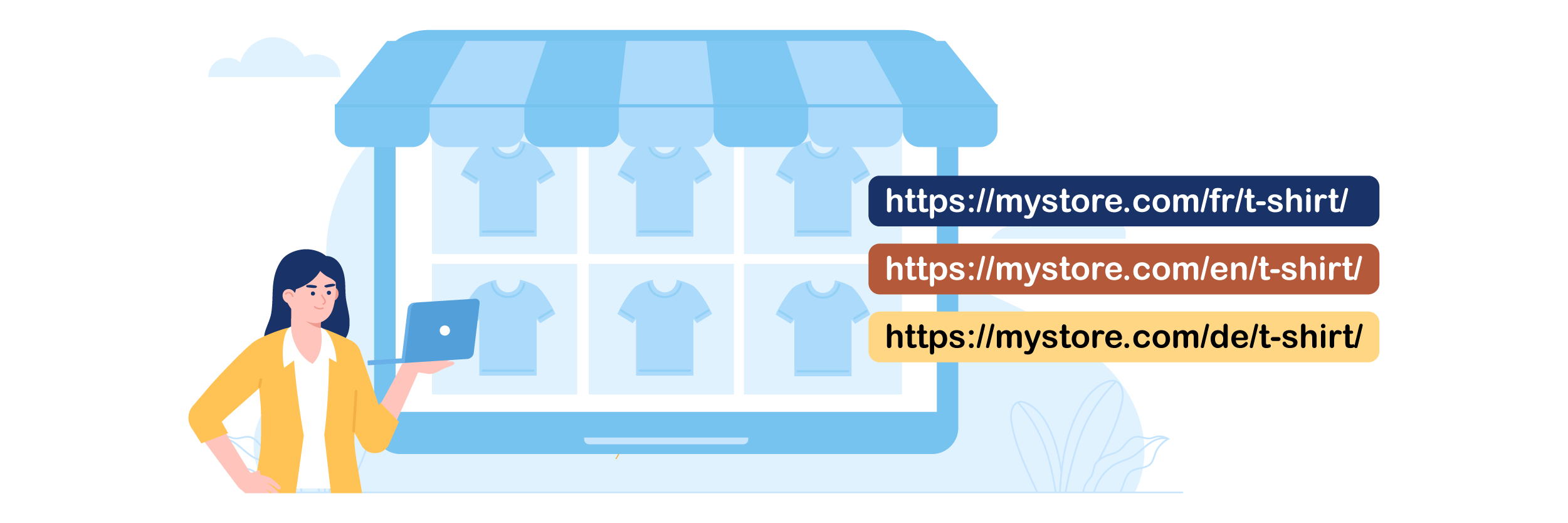
When managing an online store targeting international markets, hreflang tags play a crucial role. These tags help Google and other search engines understand each page’s correct language and region, ensuring that global visitors are directed to the most relevant version of your content.
- Reaching global customers with the right language and region: Hreflang helps WooCommerce stores display the correct version of a page based on the visitor’s language and location. This ensures that global audiences are immediately directed to the most relevant content, allowing the message to be delivered effectively and increasing the chances of conversion.
- Preventing duplicate content issues: Search engines often treat multilingual pages as duplicates if there are no clear signals. With hreflang, each page is marked as unique content for a specific audience, helping to avoid SEO penalties due to duplication and strengthening overall site performance.
- Enhancing user experience for international visitors: Hreflang ensures a smoother shopping experience by automatically directing visitors to pages in the right language. This makes it easier to access product information, enhances comfort, and builds loyalty among international customers.
Importance of Hreflang tags for multilingual WooCommerce stores

In WooCommerce stores serving customers across countries, hreflang tags are a technical addition and a crucial foundation for optimizing international SEO performance. Their implementation helps search engines understand language and regional context, making your online store more discoverable to the right global audience.
SEO benefits of implementing Hreflang
By adding hreflang, a WooCommerce store can improve its visibility in search engines across multiple international markets. Google can more easily identify the most relevant page for a user’s search based on their language or location. This reduces the risk of indexing errors and increases the chances of the right page appearing in search results.
Additionally, hreflang prevents multilingual content from being treated as duplicate, which can otherwise harm SEO. Search engines recognize each page as a unique version tailored to a specific audience. As a result, each language version has its own ranking potential while maintaining the overall SEO health of your store.
Aligning with international SEO strategy
Hreflang is a vital element of a broader international SEO strategy. By specifying the intended language and region, a WooCommerce store can build a site structure that is more search engine-friendly. This supports global expansion efforts, as every target market has clear and consistent content representation.
Furthermore, implementing hreflang strengthens other SEO signals such as backlinks and domain authority. When multilingual versions of a site are interconnected with hreflang, SEO equity is distributed evenly without competing against each other. This makes the global SEO strategy more effective, with measurable results across different regions.
Improving Click-Through Rates (CTR) with correct language pages
Hreflang also directly impacts CTR. Users who see search results in their own language are likelier to click that page over a less relevant version. This provides a competitive advantage because your store appears more aligned with the user’s needs.
Moreover, delivering a positive experience from the search results increases user trust in your store. When customers land directly on pages that match their language and region, the likelihood of purchasing grows significantly, ultimately leading to higher conversions.
How to implement WooCommerce Hreflang tags

Adding hreflang tags in WooCommerce can be done in different ways depending on your technical skills and the size of your store. Whether you prefer a hands-on approach or want an automated solution, it is important to choose the method that ensures accuracy and scalability for your international SEO.
Manual implementation of Hreflang in WooCommerce
With manual implementation, you add hreflang tags directly into your WooCommerce theme files or via the Appearance > Theme File Editor > functions.php file. This method gives you full control over how each page is tagged and which language and region it targets. However, it requires technical knowledge and can become time-consuming as your store grows and more pages or languages are added.
If you add custom code (for example, for hreflang tags), it’s best to place it at the bottom of the file, after all require_once … calls are completed. This ensures your code executes properly without interfering with other functions. The following screenshot illustrates how the code implementation looks in the WooCommerce theme file
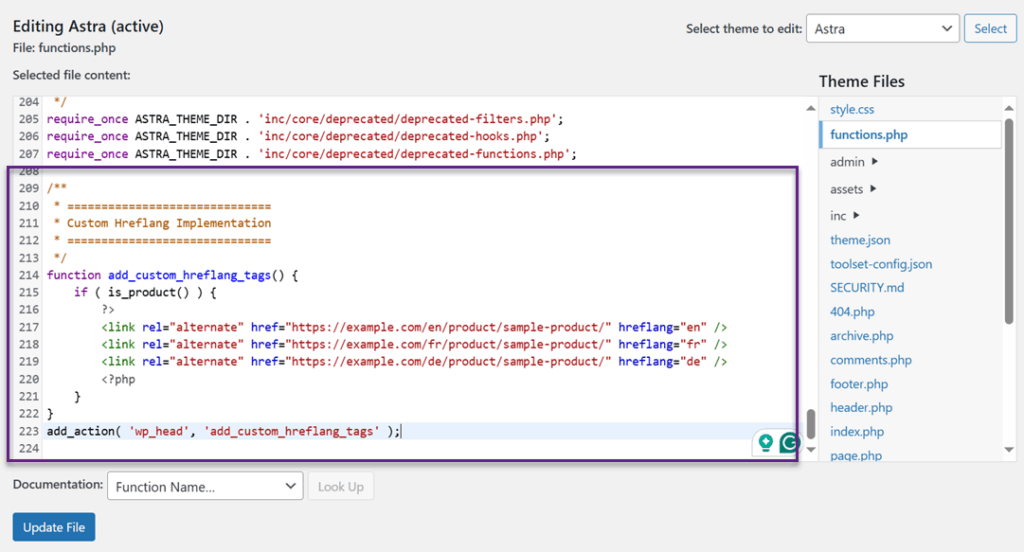
Using multilingual plugins
A simpler and more scalable option is to use translation plugins that handle hreflang automatically. These plugins translate your content and generate the correct hreflang tags for each page variation. One recommended plugin is Linguise, which offers real-time automatic translation and ensures hreflang tags are implemented correctly across your WooCommerce site.
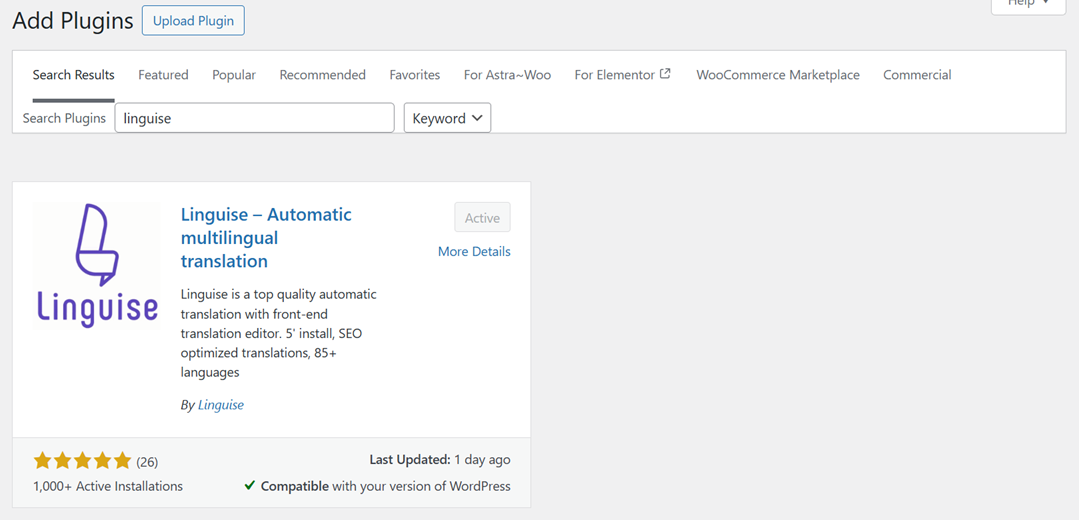
This approach saves time, reduces errors, and strengthens your multilingual SEO strategy. With Linguise, you also benefit from.
- Seamless content translation across your website – Once configured, Linguise scans your website and translates all text content into the languages of your choice.
- Effortless hreflang setup for every page – Linguise automatically adds the appropriate hreflang tags to every page of your website. Thus, you no longer need to manually add these tags to each page, saving you time and effort. With this automatic implementation, Linguise ensures that each version of your content is accurately targeted based on language and geographical location.
Automatically add WooCommerce Hreflang with Linguise
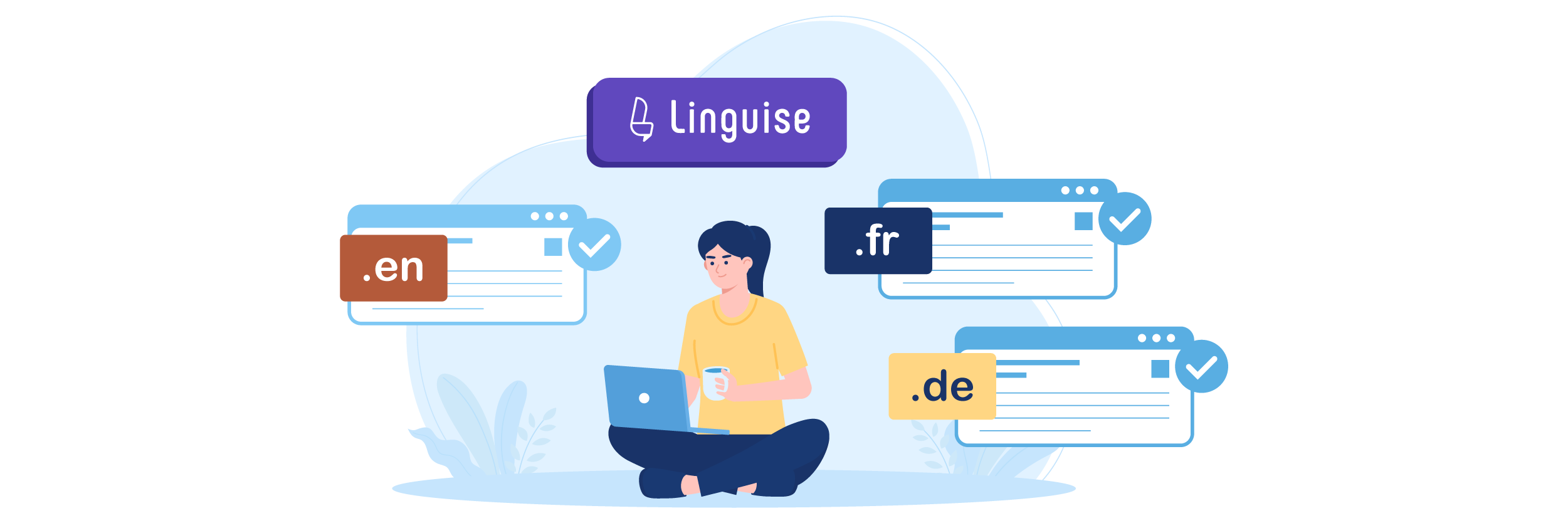
If you want to add hreflang tags in WooCommerce using Linguise, the process is simple and requires no technical complexity. Here are the steps you can follow:
Step 1 – Register and configure your Linguise account
Start by creating a free Linguise account and setting it up on the Linguise dashboard. During registration, you’ll be asked to select your platform, add your WooCommerce website domain, and choose the languages you want to enable.
Step 2 – Integrate Linguise with WooCommerce
Once your account is ready, integrate Linguise with your WooCommerce store. Copy the Linguise script provided in your dashboard.

Then paste it into your WordPress/WooCommerce theme.
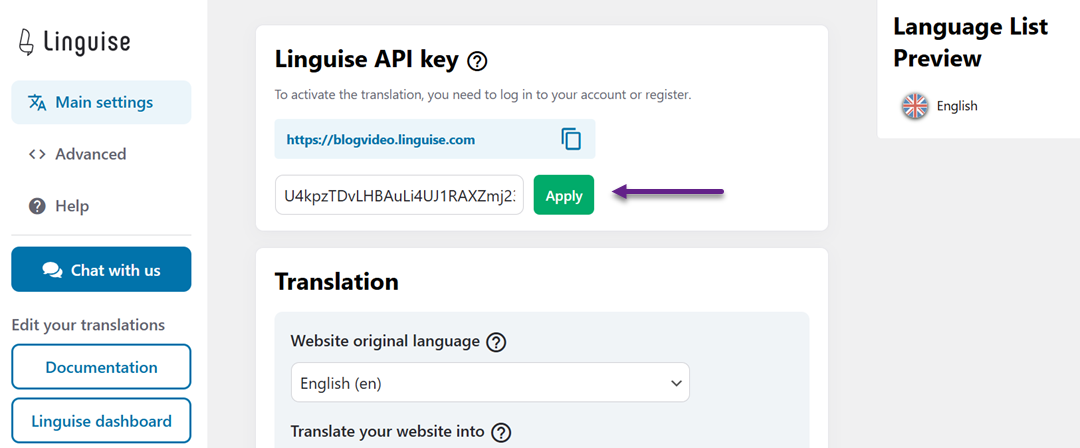
This script activates automatic translation and hreflang generation.
Step 3 – Review the results of automatic translation
After the script is integrated, Linguise will automatically translate all of your WooCommerce pages into the languages you selected earlier. You can then review the translations and make adjustments directly with the live front-end editor to ensure accuracy.
Step 4 – Automatic addition of hreflang tags
Linguise automatically inserts the correct hreflang tags across your entire WooCommerce site when translating pages. This eliminates the need to manually add hreflang to each page, saving significant time and reducing the risk of implementation errors.
Step 5 – Check your multilingual WooCommerce store pages
Finally, check your multilingual store pages and their URL structures. You’ll see that hreflang codes have been added for each language you configured. For example, if English is the default language and you’ve added Spanish, your URL will automatically include “/es/” (depending on your permalink setup).
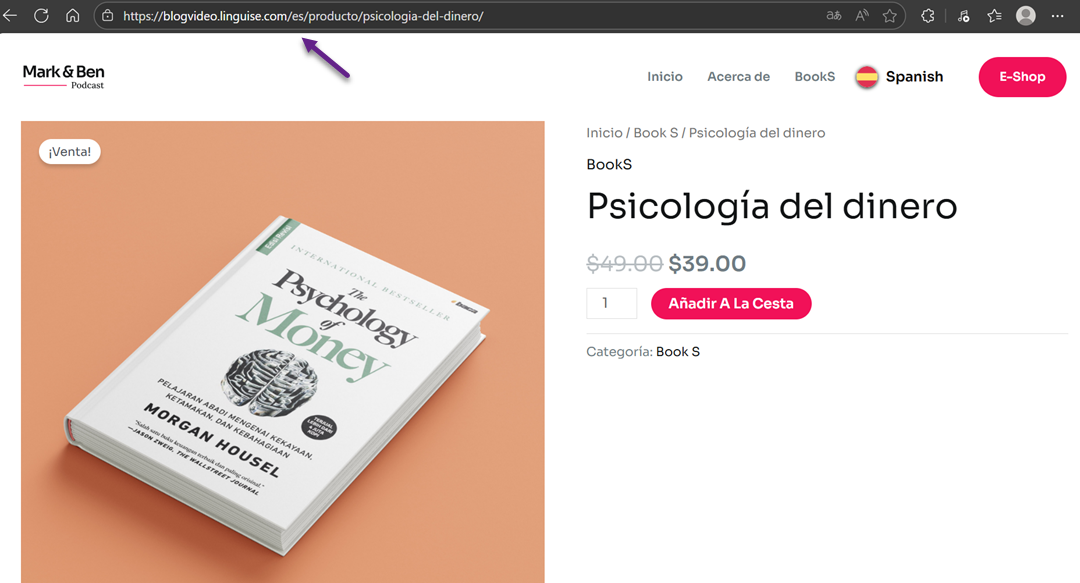
Common mistakes with WooCommerce Hreflang tags

Even though hreflang tags are essential for multilingual SEO, many WooCommerce store owners make critical mistakes in their implementation. These errors can confuse search engines, reduce visibility, and harm the overall user experience. Understanding these pitfalls and how to fix them will help ensure your international SEO strategy works effectively.
Incorrect or missing language and region codes
One of the most common mistakes with hreflang implementation is using the wrong ISO language or region codes. For example, many store owners mix up en for general English with en-US for American English or en-GB for British English. This can cause search engines to display the wrong version of a page to users, reducing its relevance and harming the overall user experience.
Another frequent issue occurs when store owners try to guess or shorten codes instead of following the proper ISO standards. This mistake prevents search engines like Google from accurately interpreting the intended targeting, effectively rendering hreflang tags useless. As a result, your multilingual SEO efforts may not deliver the expected visibility in international search results.
Solution: The best practice is to always follow the official IETF (Internet Engineering Task Force) language tag standards, specifically the BCP 47 format defined in RFC 5646. This combines language codes (ISO 639-1) and region codes (ISO 3166-1 alpha-2) in a structured format such as en-US or fr-FR. Remember, the language code must be lowercase, the region uppercase, and both separated by a hyphen. By double-checking every code against these standards, you ensure accurate targeting and make your hreflang implementation fully understood by search engines.
Forgetting self-referencing hreflang tags
Many WooCommerce sites forget to include a self-referencing hreflang tag on each page. This tag signals to search engines that the current page is valid for its own language and region. Without it, search engines may consider the page incomplete or may prioritize another variation, causing issues with indexing.
Not including self-referencing hreflang tags also weakens internal consistency, especially when multiple translations exist. As a result, your main audience may not always be directed to the correct version of your store.
Solution: Always include a self-referencing hreflang tag and alternate language tags. This ensures that the page is recognized as valid in its default form.
Conflicts between hreflang and canonical tags
Hreflang and canonical tags are meant to work together, but conflicts often occur. Some WooCommerce store owners mistakenly point all translated versions to a single canonical URL, which signals to search engines that only one version should be indexed. This cancels out the purpose of hreflang, leading to reduced visibility for localized pages.
Such conflicts can confuse search engines, making them ignore the canonical or the hreflang signal. This often results in search engines indexing the wrong version of your store, reducing international reach.
Solution: Ensure each localized page has a self-canonical (pointing to itself) while including hreflang tags to reference other language versions. This way, canonical and hreflang work in harmony rather than against each other.
Not updating hreflang when adding new pages or languages
Another frequent mistake is updating hreflang tags when new products, categories, or language versions are added. As your WooCommerce store grows, keeping hreflang configurations up-to-date is important. If not, search engines will miss the connection between new content and its language-specific counterparts.
This lack of updates creates inconsistencies across your site, leading to poor indexing and lost opportunities to serve international customers the right content.
Solution: Build hreflang maintenance into your content management workflow. Whenever a new page or translation is added, update your hreflang tags immediately.
Implementing hreflang only on some pages instead of site-wide
Some store owners apply hreflang tags only to key landing pages or product pages, neglecting the rest of the site. This partial implementation makes the setup incomplete and inconsistent, which search engines may interpret as unreliable. As a result, the hreflang signals may not function as intended.
Without site-wide implementation, important supporting pages such as categories, blogs, or checkout flows may serve the wrong language version, damaging the overall user experience.
Solution: Apply hreflang tags consistently across all multilingual pages on your WooCommerce store. A site-wide strategy ensures complete coverage and maximizes the effectiveness of your international SEO.
Conclusion
Adding Hreflang tags in WooCommerce ensures your online store reaches global audiences with the right language and region. Proper implementation helps search engines display the correct version of each page, prevents duplicate content issues, and improves user experience for international visitors. Applying hreflang consistently across your site strengthens your multilingual SEO strategy and creates a smoother shopping journey for customers worldwide.
Using an automated solution like Linguise is highly recommended to simplify the process and avoid common implementation errors. With real-time translation and automatic hreflang generation, Linguise saves you time while boosting your site’s international visibility. Start your free trial with Linguise and confidently take your WooCommerce store global.

